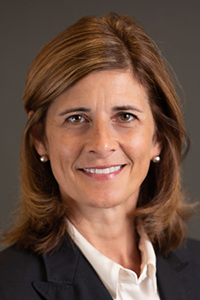Judge

Hennepin County
View state court bio
Contact with Chambers
• Preferred method to contact chambers:
Email• To whom may attorneys direct scheduling/logistical questions?
Email
• To whom may attorneys direct substantive questions?
Email• Set forth your practices and procedures for scheduling motion hearings. If the parties have a mediation provision, they should abide by that before contacting chambers to schedule a motion. Once ADR has been completed (if required), parties may request hearing dates via email to chambers and those are responded to quickly.
• Identify any type of motion for which you do not require a hearing. A continuance request can typically be handled without a hearing. There are several matters that may be handled without a hearing in Family, e.g., child support modification to name one.
• Do you accept telephone calls from attorneys to rule on discovery disputes that occur during depositions? I would do that should the occasion arise. I have not been asked for that level of involvement.
• How much time do you allot for motion hearings? 45 minutes, and most do not require that amount of time.
• Set forth your practices and procedures with respect to attending a hearing by telephone or video conference. Most of our motion hearings are by Zoom per the Supreme Court's order.
• Set forth your practices and procedures with respect to discovery motions. These matters I like to begin with a status conference with the attorneys to get a better understanding of the contours of the dispute.
• Set forth your practices and procedures with respect to stipulations of the parties, including stipulations for protective orders. I recommend that attorneys e-file/e-serve these proposed orders, and send a courtesy copy to chambers email as well. These are handled quickly. If you submit one, and it is not signed within days, feel free to reach out and inquire.
• Do you have any particular requests or procedures relating to requests to amend the scheduling order? I do not have particular requirements as to these.
• Set forth your practices and procedures with respect to default proceedings. The attorney is eliciting testimony as to every Finding of Fact the Court makes in the document, so these take some time in my courtroom.
• Set forth your practices and procedures with respect to handling emergency motions. We review these within 24 hours of receipt, and typically the same day.
• If your preferences for motion hearings by remote means differ from any of your earlier answers, please describe your preferences for remote video conference hearings. [Did not answer]
• Do you want to receive paper courtesy copies of the parties' written submissions? If you do, set forth the number of courtesy copies and identify any document type you do not want to receive. No. However, courtesy copies of exhibits for evidentiary hearings are helpful because of the difficulty that comes with trying to access a voluminous electronic court file. The Court can also mark exhibits with sticky notes, and no such interaction can (or should) occur with an electronic exhibit.
Pre-Trial Procedures
• Set forth your practices and procedures with respect to the submissions of additional legal authority or other materials at or after oral arguments. If one party intends to supplement the record, that has to be requested and permission granted, and in that instance permission is granted to everyone.
• Describe your preferred procedures for pretrial settlement conferences, including the timing of such conferences, persons who must attend, whether persons may attend by telephone or video conference, and how you participate in settlement discussions. In person seems essential for accomplishing anything in the way of settlement. The goal is to narrow the issues for trial so the trial order is accurate and trial time is used efficiently.
In-Person Trials
• Are you willing to provide a date certain for trial? Yes, always.
• Set forth your practices and procedures for handling motions in limine. Some evidentiary issues can be addressed by these motions, and some cannot without context of testimony. Attorneys should be aware of the fluid nature of trial that precludes a quick pre-trial answer to some of these request.
• What is your schedule for a typical trial day? 9 to 12:30, and 1:30 to 4:30 or 5PM.
• Set forth your practices and procedures with respect to courtroom decorum, including movement in the courtroom, use of a podium, whether attorneys should sit or stand, and how to address witnesses. Movement is largely controlled by the microphone system and the locations of such microphones. The attorneys, if they want their voices transcribed, should find the microphone and stay as close to it as possible.
• Do you impose time limits with respect to opening statements and closing arguments? Not typically.
• Set forth your practices and procedures with respect to marking and using exhibits. In OFP hearings, Exhibits are assigned numbers as they are admitted. In dissolution trials, attorneys pre-mark exhibits and those numbers remain.
• For exhibits uploaded to the Minnesota Digital Exhibit System (MNDES), set forth your preferences regarding naming conventions for files uploaded to the system. We have not yet launched MNDES in Hennepin.